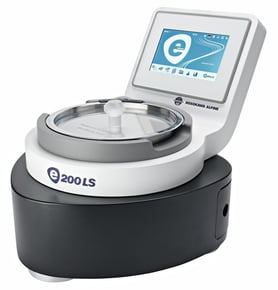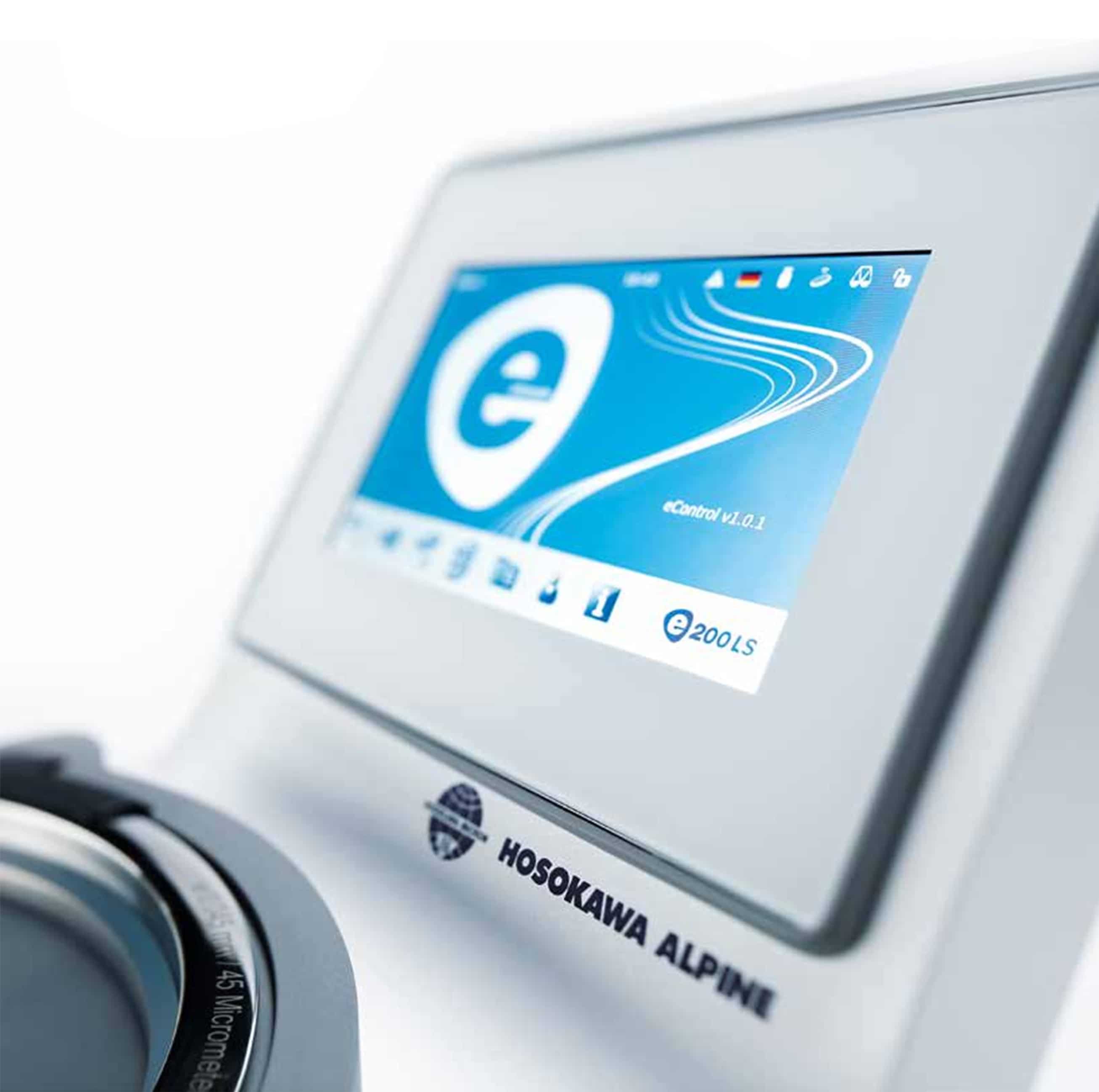A Review of the ALPINE Air Jet Sieve e200 LS
Particle size analysis is a practice that ensures the products we buy meet and exceed our expectations. Without it, companies couldn't guarantee variables like product taste, effectiveness, or longevity.
Now, not all particle analysis operation is the same as different products and industries require different testing. It's for this reason that the market is made up of various devices, such as the ALPINE Air Jet Sieve e200 LS, all of which are designed to test different materials with different parameters with varying requirements of testing.
W.S. Tyler stands as a strong particle analysis leader with over 150 years of experience working with devices such as sieve shakers, air jet sieves, and dynamic image analysis systems.
To share the experiences we and our customers have had with the ALPINE Air Jet Sieve e200 LS, this review was written to cover:
- What an ALPINE Air Jet Sieve e200 LS is
- How much it costs
- The device specficaitons
- How the device works
- The pros surrounding the ALPINE Air Jet Sieve e200 LS
- The cons surrounding the ALPINE Air Jet Sieve e200 LS
What Is an Alpine Air Jet Sieve e200 LS?

The ALPINE Air Jet Sieve e200 LS is a particle size analysis instrument that, much like traditional sieve shakers, employ test sieves to separate particles to identify their size. What makes this particular device unique is that it uses a stream of projected air to help the individual particles find the openings in the sieve cloth.
This air jet allows the ALPINE to particularly excels when testing fine particles. With that, this device can be found in most industry standards as a reliable ancillary testing device.
How Much Does It Cost?
The ALPINE Air Jet Sieve e200 LS utilizes specialized software to operate. There are four different levels of software to choose from, with each level up offering more features.
Having said that, the level of software you choose will dictate the cost of the ALPINE unit. These prices go as follows:
- Lite: $11,500.00
- Basic: $14,900.00
- Ultimate: $18,600.00
- Security: $27,500.00
To learn more about what each software level has to offer and better understand what suits your needs, read the following article:
Additionally, any test sieves you may need will affect the cost of your ALPINE order. With this device, in particular, you can choose from standard air jet sieve test sieves or RFID test sieves, with the RFID test sieves having an increased cost.
NOTE: Regardless of what software level you choose, the ALPINE Air Jet Sieve e200 LS will need a Karcher vacuum to function. This vacuum is sold separately and will add $2,050.00 to the order price.
What Are the Specs?
- Measuring range: 20 μm to 4 mm/10 μm to 2.5 mm
- Navigation: High-resolution capacitive 7" touch screen
- Underpressure: 1500-5500Pa
- Airflow: 30-115m³/h
- Weight: 20kg
- Dimensions: 503×370×380mm
Now, how your ALPINE unit utilizes the technology behind the device is again dependent on the software you use. That said, using its glare-free, touch screen control panel, you can control all parameters of your testing process.
Additionally, the device can be connected to various external devices such as printers and scales to further automate your testing process. To do so, you can use one of the following connections:
- Ethernet
- RS-232
- USB 2.0 (up to 3)
Operation
The ALPINE Air Jet Sieve e200 LS utilizes a vacuum system to create a jet of air that is projected out of a rotating slotted nozzle. This nozzle rotates along the bottom of each test sieve in your sieve stack to propel the particles, making them slam against the plexiglass lid and bounce back on the mesh.
This works to help break down agglomerated material and facility particle movement through the sieve(s). That said, each sieve must be placed and taken off manually during the testing process.
Now, based on the amount of sample material you have or are testing, you will use one of two testing methods: traditional or swiss.
With the traditional method, the process goes as follows:
- Insert the finest sieve into your ALPINE device
- Evenly distribute your sample material onto the sieve in its entirety
- secure the plexiglass lid and press play on the control panel to initiate the test cycle
- Once the cycle is complete, weigh and record the retained material
- Remove the sieve and insert the next one in the stack, transferring the retained sample
- Repeat this process until each sieve in the sieve stack has been used (in order)
With the swiss method, the process goes as follows:
- Evenly distribute your sample material, so each sieve in the sieve stack has an equal amount of material on it
- Insert the finest sieve with sample material on it into your ALPINE device
- secure the plexiglass lid, and press play on the control panel to initiate the test cycle
- Once the cycle is complete, weigh and record the retained material. Discard the
material once recorded. - Repeat this process until each sieve in the sieve stack has been used (in order)
As stated above, a scale can be attached to the device to help make weighing the retained material easier. When a scale is attached, you can store the retained weight digitally on the device.
For a more in-depth breakdown on how to test material using the ALPINE Air Jet Sieve e200 LS, read the article below:
What Are the Pros?
One of the most noteworthy benefits of using an air jet sieve is its user administrative functions. This allows user profiles to be created and tracked within the software.
To go alongside this, the device can also store and retrieve previous testing results. This means you can analyze how a particular material tested at an earlier time.
Now, both of these functions can be imperative if your operation is ever audited. With these functions, a comprehensive audit trail can be generated and presented.
Additionally, the ALPINE holds the ability to store Standard Operation Procedures to help manage testing. These procedures essentially guide the user through the process and work to prevent the wrong sieve from being placed into the device.
To that end, SOPs work best when RFID sieves are used.
What Are the Cons?
Possibly the biggest downfall the ALPINE Air Jet Sieve e200 LS presents is the fact the regards of if you use a traditional or RFID sieve, the process is fairly hands-on. The fact that you must physically swap out each sieve in the sieve stack makes testing take longer than if a sieve shaker or dynamic image analysis system is used.
This also increases the chances of human error, especially if SOPs and RFID sieves are not implemented.
Additionally, because the ALPINE relies on an industrial-grade vacuum to generate its iconic air jet, it can prove to be loud during operation. To provide some perspective, the noise level of the device is much louder than dynamic image analysis systems but quieter than mechanical sieve shakers.
Is Air Jet Sieve Analysis Right for You?
The ALPINE Air Jet Sieve e200 LS is a particle analysis device that leverages a jet of air to break up particle agglomeration and facilitates particle movement through the sieve stack. While it provides the technology needed to generate a reliable audit trail that certain industries require using the device can prove to be labor-intensive and time-consuming.
Now, as you just read a review on the device, odds are you are still in the decision-making phase. To truly understand if the ALPINE fits your needs, you must be able to understand how the device compares to other compatible instruments.
W.S. Tyler has helped customers navigate the particle analysis universe for over 140 years and understands that accurate and repeatable results start with employing the right equipment.
To help lead you towards testing results that you can trust, the following articles were written to help you understand how the ALPINE Air Jet Sieve e200 LS stands up to similar particle analysis equipment:
About Ronnie Brown
Ronnie is the Content Writer for W.S. Tyler and has four years of experience as a professional writer. He strives to expand his knowledge on all things particle analysis and woven wire mesh to leverage his exceptional writing and graphic design skills, creating a one-of-a-kind experience for customers.




